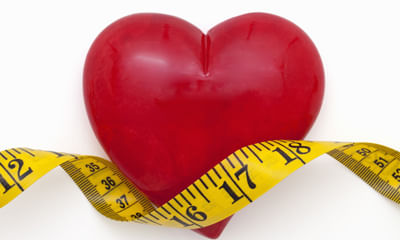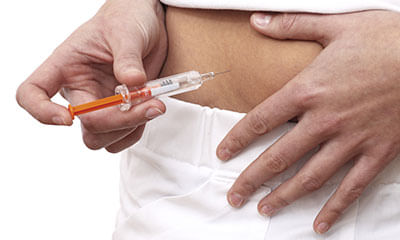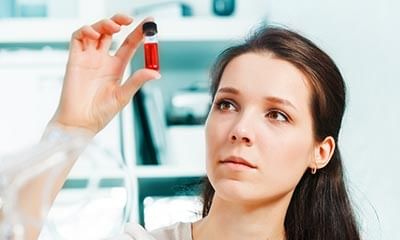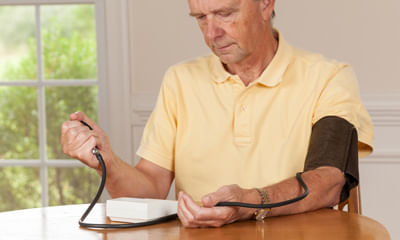High Mcv And Low Mchc
I am presently 24 year old man and 20 days ago, I went to a doctor for some anxiety related issues. He took my weight an ...
Ask Free Question
Dear user, nervousness or anxiety disorders are a category of mental disorders characterized by feelings of anxiety and fear, where anxiety is a worry about future events and fear is a reaction to current events. These feelings may cause physical symptoms, such as a racing heart and shakiness. There are a number of anxiety disorders: including generalized anxiety disorder, a specific phobia, social anxiety disorder, separation anxiety disorder, agoraphobia, and panic disorder among others. While each has its own characteristics and symptoms, they all include symptoms of anxiety. Anxiety medicines alone cannot cure anxiety disorders mainly because medicines do not alter behavior. Behavior change and continuous practice of the changed behavior cure anxiety. I suggest anxiety education, progressive counseling and progressive psychotherapy. I assure you complete cure.
Sir my mother very ill, I have blood check up from docsapp by thyrocare 1.7 arogyam and lab report following: homocystei ...
Ask Free Question
Vit d3 and hdl cholesterl are very low. Metabolic syndrome insulin resistance prediabetic. Your mother needs life style modifications. Please better you contact on line.
Hi sir, I have done health screen blood test for my wife and report is indicates the following:- HBA1c - 6.9% Average Bl ...
Ask Free Question
Fasting blood sugar 151 is definitely abnormal. Get fasting, pp blood sugar and HbA1c test done. Vit. D is low needs supplements. Hemoglobin is low and require antianemic therapy. Please consult a Physician who will advise you after clinocal evaluation.
Hello Sir, In blood test report, the hemoglobin is 5.8 (normal 11-16 g/dl), HCT - 16.6 (37-54%), RDW-SD - 63.3 (35-56 %) ...
Ask Free Question
Your hemoglobin and other findings are too low! You must visit the doctor immediately. You are having Anemia. And other issues. In patients with anemia, hemoglobin levels are low and the patient may be frequently tired and have little energy. This is because there is not enough hemoglobin to carry oxygen to the stationary tissues; thus, there is not enough oxygen available to convert nutrients into energy. The RBC count, hematocrit level, MCV, MCH and MCHC might also be low in patients with anemia.
Hi, All tests are normal like thyroid, sugar,lipid profile but CBC report shows that Haemoglobin=7.4 Tlc=4.44 RBC=4.17 M ...
Ask Free Question
There are multiple reasons of anemia like loss of blood in any discharge, inability of body to form new blood, life span of red blood cells is reduced, etc. So the cause needs to be diagnosed first. 1. Eat Iron-Rich Foods - Some good iron-based foods are liver, red meat, tofu, spinach, almonds, dates, lentils, fortified breakfast cereals, almonds 2. Increase Vitamin C Intake - Low hemoglobin levels due to a deficiency of vitamin C can be corrected by eating more foods rich in vitamin C. Iron cannot be fully absorbed by the body without the help of this vitamin. Eat foods rich in vitamin C like papaya, oranges, lemon, strawberries, bell peppers, broccoli, grapefruit, tomatoes and spinach. 3. Take Folic Acid - Folic acid, a B-complex vitamin, is required to make red blood cells. So, a folic acid deficiency automatically leads to a low hemoglobin level. Some good food sources of folic acid are green leafy vegetables, rice, sprouts, dried beans, wheat germ, fortified cereals, peanuts, bananas, broccoli and liver. 4. Beetroots - Beetroot is highly recommended to increase hemoglobin levels. It is high in iron, folic acid as well as fiber and potassium. Its nutritional value helps increase the body’s red blood cell count 5. Apples - An apple a day can help maintain a normal hemoglobin level. Apples are rich in iron along with various other health-friendly components that are required for a healthy hemoglobin count. For homeopathic medicine, contact us after treatment, we will go for blood test once again.
Total RBC-6.21,Hemoglobin 12.4 ,MCV -68.4 ,MCH -20 ,MCHC -29.2, RDW-CV 18.6 and Thyroid stimulating hormone (TSH)-7.39 s ...
Ask Free Question
You have mild iron deficiency anemia Anaemia occurs when you have a decreased level of hemoglobin in your red blood cells (RBCs). Hemoglobin is the protein in your RBCs that is responsible for carrying oxygen to your tissues. Iron deficiency anemia is the most common type of anemia, and it occurs when your body doesn’t have enough of the mineral iron. Your body needs iron to make hemoglobin. When there isn’t enough iron in your blood stream, the rest of your body can’t get the amount of oxygen it needs. While the condition may be common, many people don’t know they have iron deficiency anaemia. It’s possible to experience the symptoms for years without ever knowing the cause. In women of childbearing age, the most common cause of iron deficiency anaemia is a loss of iron in the blood due to heavy menstruation or pregnancy. A poor diet or certain intestinal diseases that affect how the body absorbs iron can also cause iron deficiency anaemia Iron Deficiency Anemia Symptoms Causes Risk factors Diagnosis Anemia in women Complications Treatment Prevention Outlook What is iron deficiency anemia? Anemia occurs when you have a decreased level of hemoglobin in your red blood cells (RBCs). Hemoglobin is the protein in your RBCs that is responsible for carrying oxygen to your tissues. Iron deficiency anemia is the most common type of anemia, and it occurs when your body doesn’t have enough of the mineral iron. Your body needs iron to make hemoglobin. When there isn’t enough iron in your blood stream, the rest of your body can’t get the amount of oxygen it needs. While the condition may be common, many people don’t know they have iron deficiency anemia. It’s possible to experience the symptoms for years without ever knowing the cause. In women of childbearing age, the most common cause of iron deficiency anemia is a loss of iron in the blood due to heavy menstruation or pregnancy. A poor diet or certain intestinal diseases that affect how the body absorbs iron can also cause iron deficiency anemia. Doctors normally treat the condition with iron supplements or changes to diet. SYMPTOMS Symptoms of iron deficiency anemia The symptoms of iron deficiency anemia can be mild at first, and you may not even notice them. According to the American Society of Hematology (ASH), most people don’t realize they have mild anemia until they have a routine blood test. The symptoms of moderate to severe iron deficiency anemia include: general fatigue weakness pale skin shortness of breath dizziness strange cravings to eat items that aren’t food, such as dirt, ice, or clay a tingling or crawling feeling in the legs tongue swelling or soreness cold hands and feet fast or irregular heartbeat brittle nails headaches CAUSES Causes of iron deficiency anemia According to the ASH, iron deficiency is the most common cause of anemia. There are many reasons why a person might become deficient in iron. These include: Inadequate iron intake Eating too little iron over an extended amount of time can cause a shortage in your body. Foods such as meat, eggs, and some green leafy vegetables are high in iron. Because iron is essential during times of rapid growth and development, pregnant women and young children may need even more iron-rich foods in their diet. Pregnancy or blood loss due to menstruation Heavy menstrual bleeding and blood loss during childbirth are the most common causes of iron deficiency anemia in women of childbearing age. Internal bleeding Certain medical conditions can cause internal bleeding, which can lead to iron deficiency anemia. Examples include an ulcer in your stomach, polyps in the colon or intestines, or colon cancer. Regular use of pain relievers, such as aspirin, can also cause bleeding in the stomach. Read more: Learn about cytopenia and anemia's relationship » Inability to absorb iron Certain disorders or surgeries that affect the intestines can also interfere with how your body absorbs iron. Even if you get enough iron in your diet, celiac disease or intestinal surgery such as gastric bypass may limit the amount of iron your body can absorb. RISK FACTORS Risk factors Anemia is a common condition and can occur in both men and women of any age and from any ethnic group. Some people may be at greater risk of iron deficiency anemia than others, including: women of childbearing age pregnant women people with poor diets people who donate blood frequently infants and children, especially those born prematurely or experiencing a growth spurt vegetarians who don’t replace meat with another iron-rich food If you’re at risk of iron deficiency anemia, talk to your doctor to determine if blood testing or dietary changes could benefit you. DIAGNOSIS How it’s diagnosed A doctor can diagnose anemia with blood tests. These include: Complete blood cell (CBC) test A complete blood count (CBC) is usually the first test a doctor will use. A CBC measures the amount of all components in the blood, including: red blood cells (RBCs) white blood cells (WBCs) hemoglobin hematocrit platelets The CBC provides information about your blood that is helpful in diagnosing iron deficiency anemia. This information includes: the hematocrit level, which is the percent of blood volume that is made up of RBCs the hemoglobin level the size of your RBCs A normal hematocrit range is 34.9 to 44.5 percent for adult women and 38.8 to 50 percent for adult men. The normal hemoglobin range is 12.0 to 15.5 grams per deciliter for an adult woman and 13.5 to 17.5 grams per deciliter for an adult man. In iron deficiency anemia, the hematocrit and hemoglobin levels are low. Also, RBCs are usually smaller in size than normal. A CBC test is often performed as part of a routine physical examination. It’s a good indicator of a person’s overall health. It may also be performed routinely before a surgery. This test is useful to diagnose this type of anemia because most people who have an iron deficiency don’t realize it. Other tests Anemia can usually be confirmed with a CBC test. Your doctor might order additional blood tests to determine how severe your anemia is and help determine treatments. They may also examine your blood through a microscope. These blood tests will provide information, including: the iron level in your blood your RBC size and color (RBCs are pale if they’re deficient in iron) your ferritin levels your total iron-binding capacity (TIBC) Ferritin is a protein that helps with iron storage in your body. Low levels of ferritin indicate low iron storage. A TIBC test is used to determine the amount transferrin that’s carrying iron. Transferrin is a protein that transports iron. Tests for internal bleeding If your doctor is concerned that internal bleeding is causing your anemia, additional tests may be needed. One test you may have is fecal occult test to look for blood in your feces. Blood in your feces may indicate bleeding in your intestine. Your doctor may also perform an endoscopy, in which they use a small camera on a flexible tube to view the linings of your gastrointestinal tract. An EGD test, or upper endoscopy, allows a doctor to examine the lining of the esophagus, stomach, and the upper part of the small intestine. A colonoscopy, or lower endoscopy, allows a doctor to examine the lining of the colon, which is the lower portion of the large intestine. These tests can help identify sources of gastrointestinal bleeding. ANEMIA IN WOMEN Iron deficiency anemia in women Pregnancy, significant menstrual bleeding, and uterine fibroids are all reasons why women are more likely to experience iron deficiency anemia. Heavy menstrual bleeding occurs when a woman bleeds more or longer than women typically bleed during menstruation. According to the Centers for Disease Control and Prevention, typical menstrual bleeding lasts for 4 to 5 days and the amount of blood lost ranges from 2 to 3 tablespoons. Women with excess menstrual bleeding typically bleed for more than seven days and lose twice as much blood as normal. According to the National Heart, Lung, and Blood Institute, an estimated 20 percent of women of childbearing age have iron deficiency anemia. Pregnant women are even more likely to have iron deficiency anemia because they require greater amounts of blood to support their growing babies. A pelvic ultrasound can help a doctor look for the source of excess bleeding during a woman’s period, such as fibroids. Like iron deficiency anemia, uterine fibroids often don’t cause symptoms. They occur when muscular tumors grow in the uterus. While they’re not usually cancerous, they can cause heavy menstrual bleeding that can lead to iron deficiency anemia. COMPLICATIONS Health complications of iron deficiency anemia Most cases of iron deficiency anemia are mild and don’t cause complications. The condition can usually be corrected easily. However, if anemia or iron deficiency is left untreated, it can lead to other health problems. These include: Rapid or irregular heartbeat When you’re anemic, your heart has to pump more blood to make up for the low amount of oxygen. This can lead to irregular heartbeat. In severe cases, it can lead to heart failure or an enlarged heart. Pregnancy complications In severe cases of iron deficiency, a child may be born prematurely or with a low birth weight. Most pregnant women take iron supplements as part of their prenatal care to prevent this from happening. Delayed growth in infants and children Infants and children who are severely deficient in iron may experience delayed growth and development. They may also be more prone to infections. TREATMENT Treatment options Iron supplements Iron tablets can help restore iron levels in your body. If possible, you should take iron tablets on an empty stomach, which helps the body absorb them better. If they upset your stomach, you can take them with meals. You may need to take the supplements for several months. Iron supplements may cause constipation or black stools. Diet Diets that include the following foods can help treat or prevent iron deficiency: red meat dark green, leafy vegetables dried fruits nuts iron-fortified cereals Additionally, vitamin C helps your body absorb iron. If you’re taking iron tablets, a doctor might suggest taking the tablets along with a source of vitamin C, such as a glass of orange juice or citrus fruiYour TSH is mildly elevated you may repeat the test after 3 months. You don't require any medicines right now.
I Got a few of them tested just now. LDL cholesterol-103 CBC show a little high red blood cells with Normal hemoglobin. ...
Ask Free Question
If you are residing in an area with heavy air pollution slightly increased count of RBC is normal. Nothing to worry about.
I Got my blood test reports. It shows increased much and mchc and pcv and esr with normal hb and normal mcv values. What ...
Ask Free Question
Hello lybrate-user, MCHC is nothing but the average concentration of hemoglobin in your red blood cells. Slight increase in MCHC is normal. PVC is the percentage of red bloodcells in circulating blood. Slight increase in PVC can be neglected. ESR determines the infection or immune response of your body. Moderately elevated ESR occurs with inflammation but also with anemia, infection, pregnancy, and with aging. So if your CBC values are slightly high_ there is nothing to worry about. Slight alteration in living can help you to low down these levels. Eat healthy, worry less, be stress free #stayhealthy.
Hello sir/mam, In my friend CBC report RBC count is (low) 3.99mill./cu. Mm, HEMOGLOBIN is 15. 2g/dl (normal), HEMOCRIT i ...
Ask Free Question
IIt could be the case of iron deficiency. If you have symptoms of weakness,tiredness,lack of concentration then you may take treatment. You may opt for homoeopathic treatment..
I did my blood test done My overall report was normal except for few things Rbc (mcv) 96.4 Rbc (mchc) 30.6 Rbc (rdw cv) ...
Ask Free Question
lybrate-user, these reports only give an indication to the size of the red blood cells. They do not indicate the confirmation of any disease. The most likely reason of your dry hands is dehydration. This is not directly linked to your high BP, but surely intensified by it. Please begin to drink plenty of water through out the day. Make sure you are not ating packaged, fried, oily, spicy foods that will cause dehydration also. Try to apply simple sesame oil (til ka tel) on your hands 2 to 3 times a day after washing them, to reduce the irritation of dryness. Consume lots of fresh fruit and fresh vegetables in your diet. When there is low vitamin, hands and body can tend to feel dry an uncomfortable. Wish you a happy Diwali.





